9 Ways You Can Recover a Blog from a Google Core Update
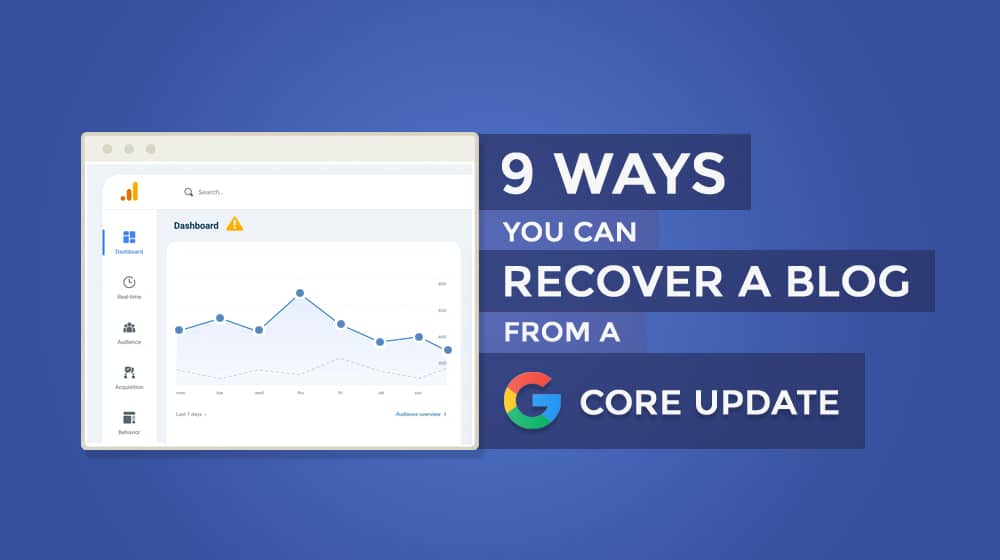
One of the quirks of SEO is that many of us end up writing content that is very slightly off because that slight shift, in reality, is what other people are searching for. "Google Core Update" is one such query. People get hit by some adjustment in Google's algorithm update, learn it's called a broad Core Update, and search for how to recover from "the Core Update."
Well, that's hard because there's no "Core Update" to recover from - Google pushes "Core Updates" every few months. Core Updates are usually more significant than the average near-daily updates Google makes to their search algorithm, dramatically affecting search results and hitting a more substantial percentage of websites. Many will improve; others will notice fluctuations in performance. That's just the nature of the beast.
If Google pushes out a Core Update and your site takes a hit, you naturally want to learn why it happened and how to recover. It's tricky because it can vary from update to update. Every Google Core Update has a different focus, so a big part of identifying how to recover from it is discovering why you were affected in the first place.
One thing it's worth mentioning is that core algorithm updates are not penalizing you. They're re-sorting and recontextualizing you. Here's the analogy Google uses:
"One way to think of how a core update operates is to imagine you made a list of the top 100 movies in 2015. A few years later in 2019, you refresh the list. It's going to naturally change. Some new and wonderful movies that never existed before will now be candidates for inclusion. You might also reassess some films and realize they deserved a higher place on the list than they had before.
The list will change, and films previously higher on the list that move down aren't bad. There are simply more deserving films that are coming before them."
Your site isn't any worse and isn't necessarily doing anything wrong; it's just that other sites may be more deserving of the spot you currently occupy.
Suppose you've confirmed that your organic impressions and traffic dropped significantly in Google Analytics and Google Search Console. If you experienced a massive ranking drop, you'd want to audit your site to discover and improve the underperforming content after the latest core update roll out.
Below, I'm going to give you nine things you can focus on to help improve your site and take back your spot (or even rise above where you were before.) Each of these nine points comes from one of Google's core focuses, regarding what they use to judge sites.
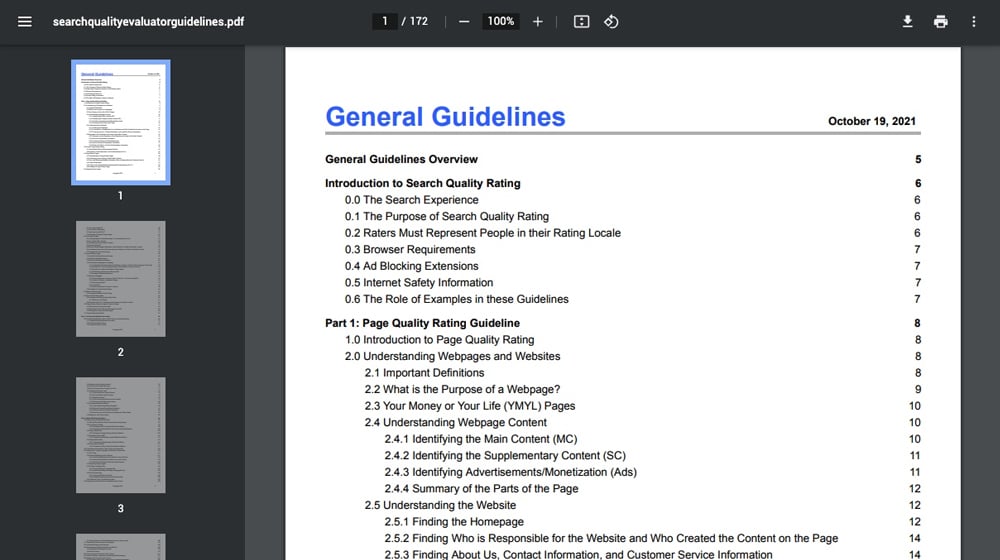
Now, on with the SEO tips. Bear in mind that none of these are easy. You need to put some dedicated work into your site to make it better in the eyes of Google, and while sometimes you have some low-hanging fruit to pluck, you'll quickly find that you need to be above-average to succeed.
 30 Second Summary
30 Second Summary
You need to pay attention to Google's Core Updates, which happen every few months and can affect your site's rankings. If your site takes a hit, you're not being penalized - Google is just re-sorting results based on which sites deserve top spots. To recover and improve your rankings, you should audit your content, analyze competitors, remove poor content and upgrade existing posts. You have to also focus on building expertise and trust, speed up your site, improve user experience and earn quality backlinks naturally.
1: Perform a Content Audit
Google's algorithm is based on three things when you get right down to it:
- Backlinks pointing to a site.
- Keywords guiding the content relevance for a query.
- Content quality enables that site to out-rank other sites for that search term.
Since 2011, the third entry on this list has been one of the most important aspects of SEO. Content marketing and high-quality content are paramount. Thus, performing a content audit is an essential skill – and something you should do at least once a year.
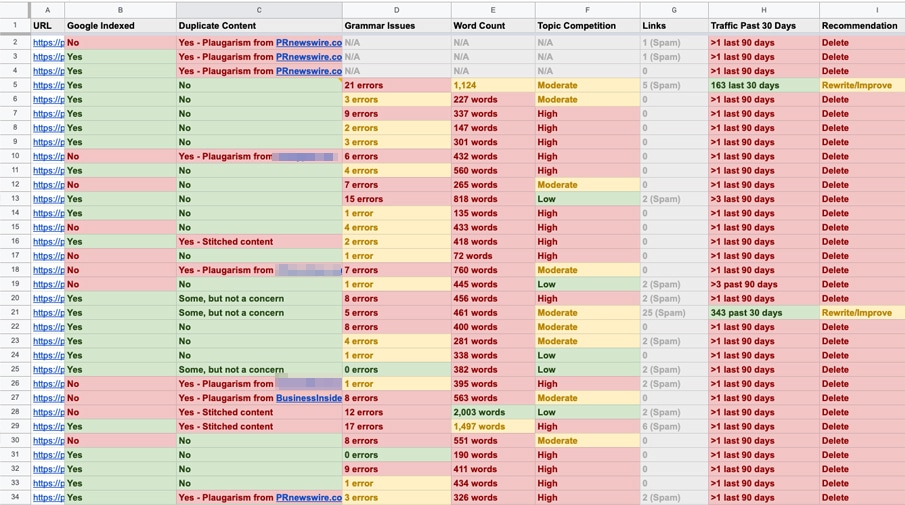
Now, content pruning is a pretty complex activity. You have to pull down and analyze every blog post on your site and figure out what's worth keeping and what isn't. It's definitely worth a whole post of its own. Lucky for you, I've already written that post and maintained and updated it as often as possible.
By reading that post and following that process, you'll be able to analyze the content of your blog, figure out what is holding you back and should be excised, and learn where to focus your efforts. While working on this, figure out which web pages were most heavily affected by the Core Update, and try to find a pattern between them.
2: Perform a Competitive Analysis
Google ranks sites not according to some objective value but in comparison to one another.
That means your SERPs can fall because others are improving and you're not. If you're on the highway going 80mph, but everyone else is going 90mph, you're still going to be passed left and right, even if the speed limit is 75. You're not doing anything wrong, per se; your site isn't growing at the same speed as your competitors.

So, what you need to do, is audit your competition and see what they're doing. Look for opportunities to improve in a way that can outperform the people who currently out-rank you by making your content clearer, with higher value, and with a better user experience. Here's my dedicated guide to competitive content analysis:
Semrush also has an excellent guide on the subject:
Many of the tutorials out there are more focused on product and market comparisons, but we're concerned with your blog today, so that's where you want to focus.
Your goal is to analyze your top competitors' blogs, identify ways they're outperforming you and areas where they aren't, and figure out how you can improve to outdo them.
- How can you top an already top-class ultimate guide? Sometimes, this will be nearly impossible. You look for other opportunities and maybe give up that keyword as a lost cause, at least as far as getting the top spot or two.
- Sometimes, you're already outdoing them. If your competitors are still out-ranking you, it may come down to backlinks or some other structural or site element holding you back.
This analysis gives you a place to start and an idea of what the rest of the field looks like - a benchmark you can use to set your new baseline standards.
3: Remove Poor Content
Some people are very hesitant to delete anything on their sites. I know I was, too, at first.
After all, that content represents a lot of work. You spent hours composing, formatting, optimizing, and promoting it. Or, maybe you paid hundreds of dollars or more to buy and promote it. That's a pretty significant investment to delete.
Yet, deleting it can be beneficial.

On the one hand, deleting the content erases your investment, and there's no way you can re-sell it to recoup your losses. You would also lose out on search ranking for whatever keyword it targets, assuming you were ranking for it at all.
SEO is not a numbers game. I often say that it is, in that each new post is an opportunity to rank and bring in people, but the truth is, it's always quality over quantity. You can focus on numbers once you have a high enough quality standard.
A prime example of this is Backlinko. Backlinko is one of the biggest, best-known names in digital marketing and technical SEO. They're huge; they probably have a massive blog, right?.
The entire site of Backlinko has less than 500 indexed pages as of this writing. That includes index pages, their homepage, contact page, and other "system" pages. You don't need to have thousands of blog posts to be one of the top-ranked businesses in your niche. Every blog post is an ultimate guide, even if it's on a weird topic. I'd rather have a single beast article pulling in thousands of visitors per day than thousands collectively pulling in a fraction of that.
4: Improve Existing Content
You'll categorize your content into three groups when you perform your content audit. One group is the content that's good the way it is. Another is the content that simply isn't salvageable, that you're better off deleting.
Everything else is content that warrants a little extra polish, some effort to improve it somehow. The only question is, how can you improve that content?
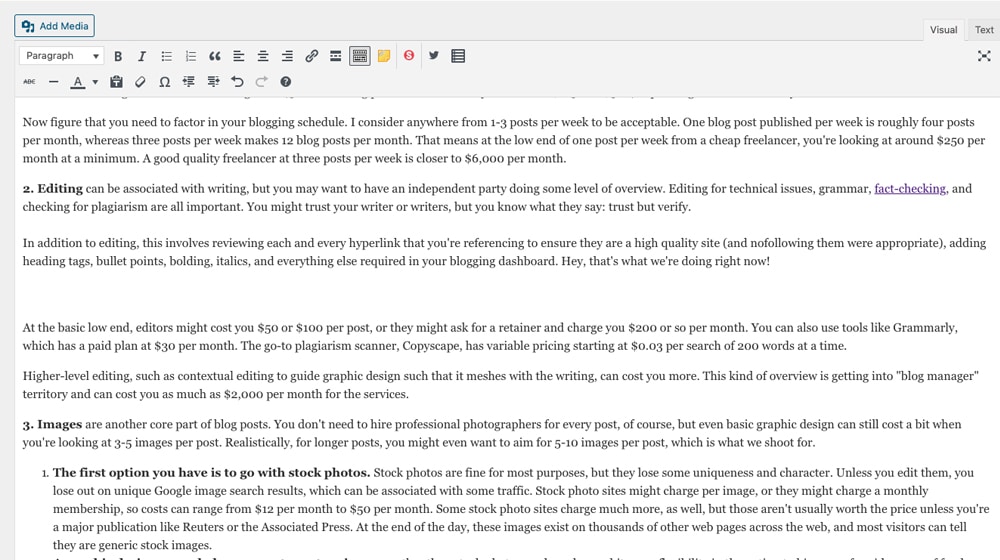
Here are a bunch of options. Many of them may or may not apply to your posts, but any that do can be valuable avenues to improvement.
- Make your headline catchier, notably if you can include an updated version of your keyword.
- Replace your images with better, unique, catchier graphics. Bonus points if you can share them on Pinterest or Instagram more efficiently.
- Find and add quotes from experts to support your points - this can sometimes result in backlinks or social shares from the experts you quote.
- Make your posts longer. I always aim for 2,000 words for standard content and as much as 4,000 for pillar content. Note: only do this if you're adding value with that length.
- Add more internal links throughout your site.
- Enable and encourage blog comments, respond to existing comments, and then use your excellent comments to add the exchange to the core of the post.
- Add more formatting, icons, colors, and attention-grabbing elements to make it easier to skim and extract value from your post.
- Make better use of your keywords, and use them anywhere you can.
- Update facts, figures, statistics, and anything that may have changed since the last time you updated or published the content.
- Add an FAQ section to the bottom of your post to summarize and add additional value.
These can help you kick your content up a notch or two.
5: Improve Your Site's E-A-T
It's not enough to publish good content; you need to be a trusted authority. Google came up with E-A-T – Expertise, Authority, and Trustworthiness – in 2014. Since then, they have made it a more critical part of what they consider to be "great content."
How do you become a trusted authority? Well, you publish more top-tier content. Cyclical, right?
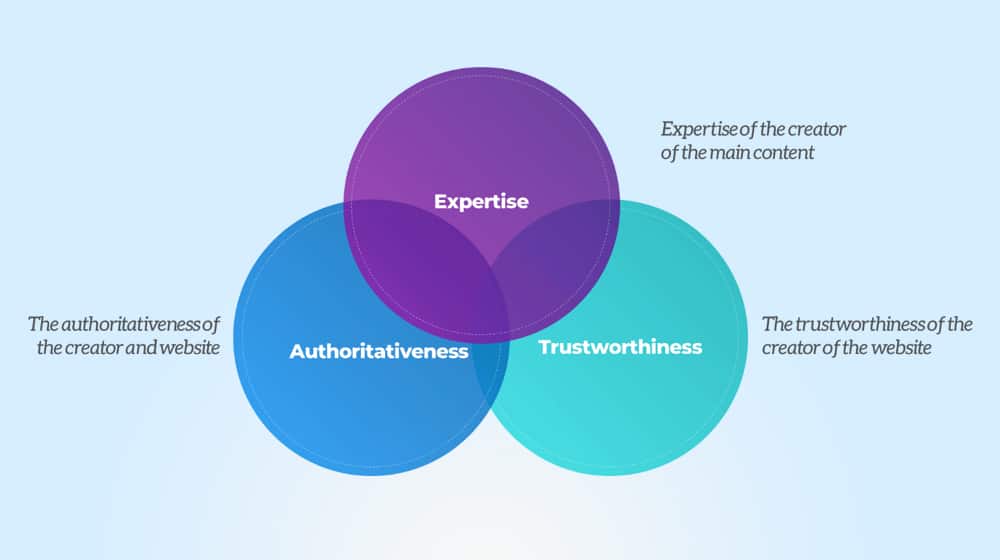
Here's how to work on improving each aspect of E-A-T in your blog posts.
- Expertise: Add more statistics, quotes, and information to support your claims. Data that supports your claims is a ranking signal, and it's always better than claims with no substantiation. Search engines are also looking at the expertise of the author.
- Authoritativeness: Build a more substantial presence for your brand name throughout your industry - this combines reputation management, backlink building, unlinked mentions, social media presence, and more.
- Trustworthiness: Build trust and reliability for your site as a whole and yourself as an author - this is both on-site and off-site and can be anything from using SSL on your site to gaining citations in industry publications. Adding an author bio is an example of a "trustworthiness" ranking factor; it's easier to trust an article when you can see the name, photo, and credentials of the person who wrote it. Anonymous articles are less trustworthy.
E-A-T isn't easy, nor is it fast. But, it's essential, so you can't ignore it. Every little bit helps, too.
6: Speed Up Your Site
While this one isn't related directly to your content, it's still essential. Google is doing everything it can (within reason) to facilitate an internet that is accessible to everyone. Since over 50% of internet usage is performed on smartphones and other small devices, vast swaths of the world still don't have high-speed internet, making sites lean and low on resource-intensive content.
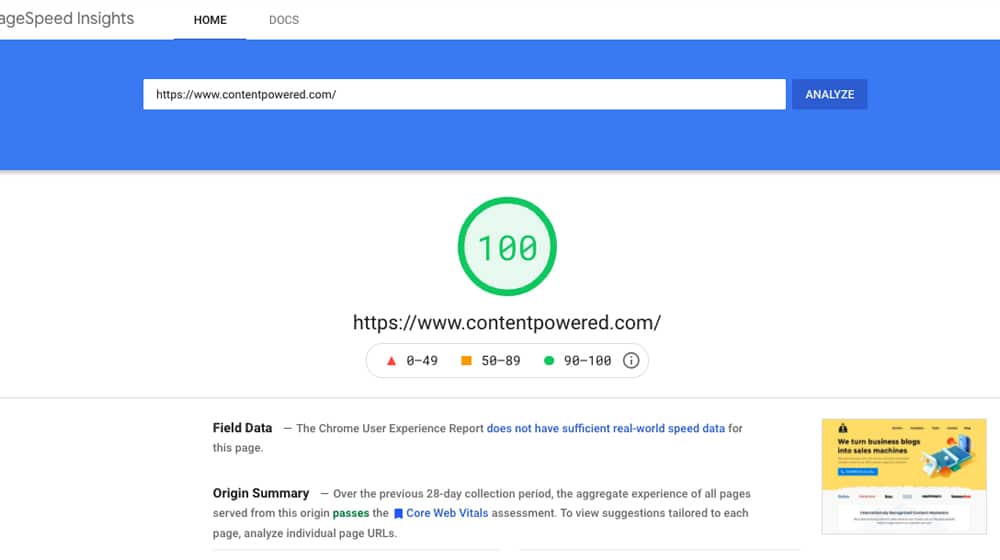
For this reason, page speed and the Core Web Vitals are integral aspects of modern web success. So, crunch down your images, lazy load and use a CDN for media, minimize render-blocking scripts and elements, and generally do anything you can to improve site speed. I have some tips on this front, and I'm not the only one:
7: Improve Your User Experience
When you look at Google's Core Update guide, they give you a rundown of questions you can ask yourself about your content to guide your way to improvements. One section of those questions is the Presentation and Production Questions section.
This section is Google hinting that your user experience and website functionality is critical to your ranking. The more you can streamline your user experience, the better - from spelling and grammar to ad density to production values.
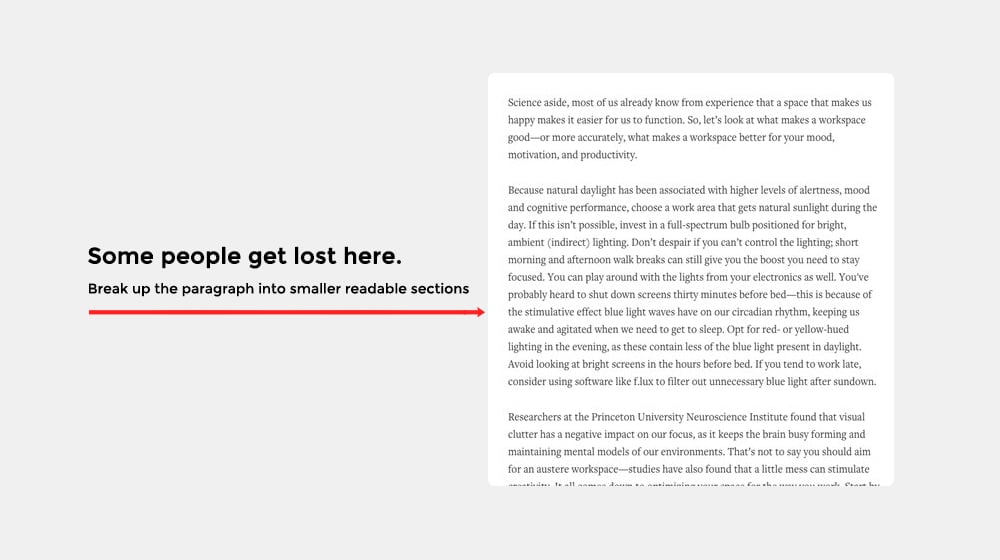
Invest in your user experience! I do a lot on this front, and it pays off. All the little aspects of making a post easier to read and extract value from are elements of the user experience, from the table of contents to a triple-proofread to custom images.
8: Earn More Backlinks
As much as Google wants to rank content based on its inherent qualities, backlinks are still a fundamental way of mapping the flow of value and searchers. Sooner or later, all SEO comes back to link building in some form. I even mentioned it a couple of times in the above tips.
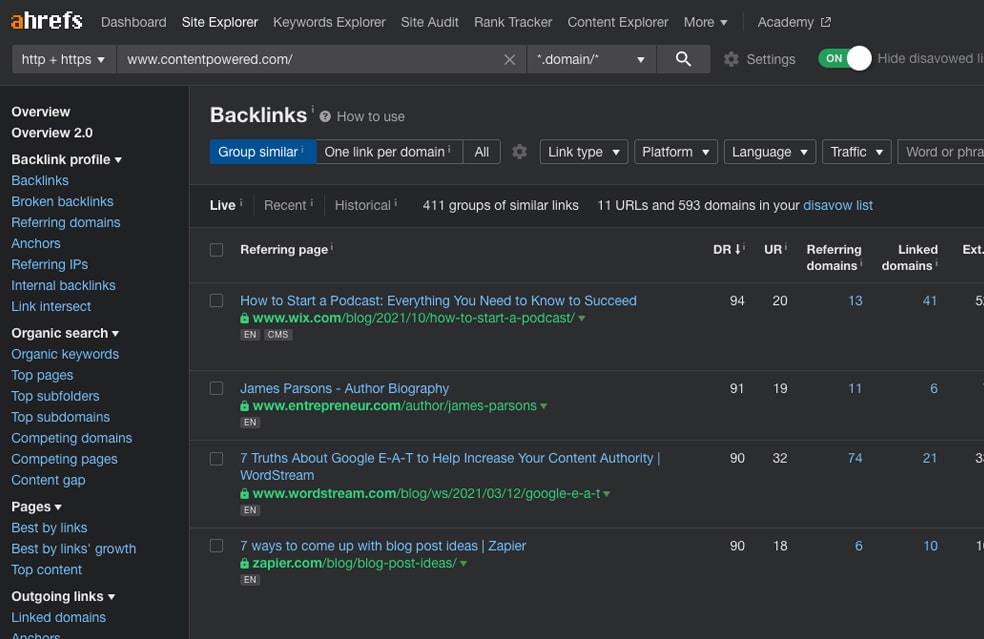
When in doubt, remember the words of Matt Cutts, former head of Google's webspam team:
"The objective is not to 'make your links appear natural,' the objective is that your links are natural."
That means, sooner or later, you'll have to put some time into earning backlinks. That's a well-trodden topic, and it's one of the easiest things to over-optimize and make mistakes with, so we'll save this one for another time.
9. Be Aware of Other Algorithm Updates
Broad core algorithm updates aren't the only algorithm updates that Google has in place.
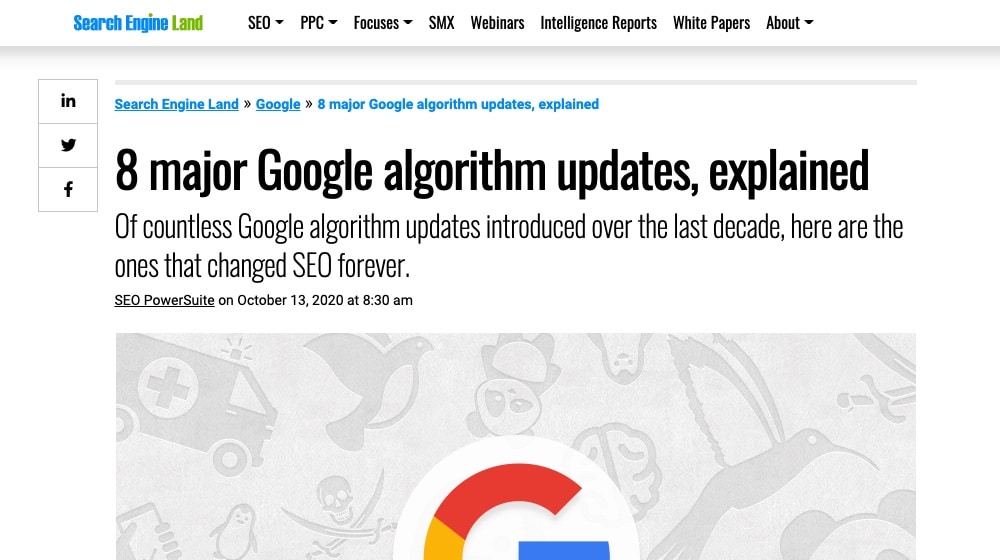
It's a wise to be aware of all the major algorithm changes that Google has rolled out in the past and is continuing to update. For example:
- Google Panda: Google Panda penalizes thin and low-value content and focuses on things like content farms, duplicate content, and poorly researched articles. You can read more about it here, with expert notes from Danny Sullivan and John Mueller.
- Google Penguin: Google Penguin penalizes low-quality websites and is heavily focused on identifying manipulative links and spammy keyword practices. You can read about it here.
- YMYL Update: YMYL (Your Money, Your Life) focuses on content that is potentially sensitive that could harm the reader if they take bad advice, for example, regarding health, legal, safety, financial, and stability. You can read more about it here.
- Google Medic: Barry Schwartz nicknamed this update "Medic," but that doesn't mean it only focuses on medical sites. This update focuses primarily on search intent. You can read more details about the Medic update here.
Once you've invested in these nine pillars of modern SEO, you can recover from any Core Update while making your site more resilient to them in the future. Best of all, these search quality updates are raising the bar for what it takes to create high-quality content, and low-quality content is becoming less common in search queries.
Improving your website and content is not easy, and it's not fast, but it's a long-term source of value that will stick with site owners for a very long time.



 30 Second Summary
30 Second Summary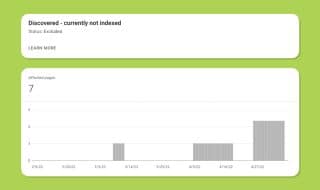



May 06, 2024
Hey, I learned a lot from this post, but I need your help to clarify my queries.
My blog posts are impacted by Google's October spam + core update, and the impact I have seen is that my well-performing blog posts, which were ranking number 1 in SERP results for years, are now disappeared from Google SERP. Some of these posts appeared back to their previous positions after a week, but the majority are still missing.
So, can you tell me what are the possible reasons for this impact of disappearing from SERP? The same thing happened to even more posts in this March update. Please give me some guidance.
May 23, 2024
Hi Mohit!
It could be any number of things affecting your site. You will need a complete SEO and content audit to find areas for improvement.
One thing that has helped me, too, is to run Google searches for each of those SERPs and see what kind of apges are ranking. Are they blog posts? Videos? Forum threads? I noticed the helpful content update shifted the types of SERPs that are appearing. So, some keywords may have shown blog posts in the past, but now they're not - and Google is deciding that forum threads, videos, offical sites, or something else is more helpful for visitors than blog posts are.
It's very dependent on the keyword. This would explain why some of your keywords are just fine, and others have disappeared. Run a search and let me know what you find. Feel free to drop me an email, too, and I'll take a deeper look.